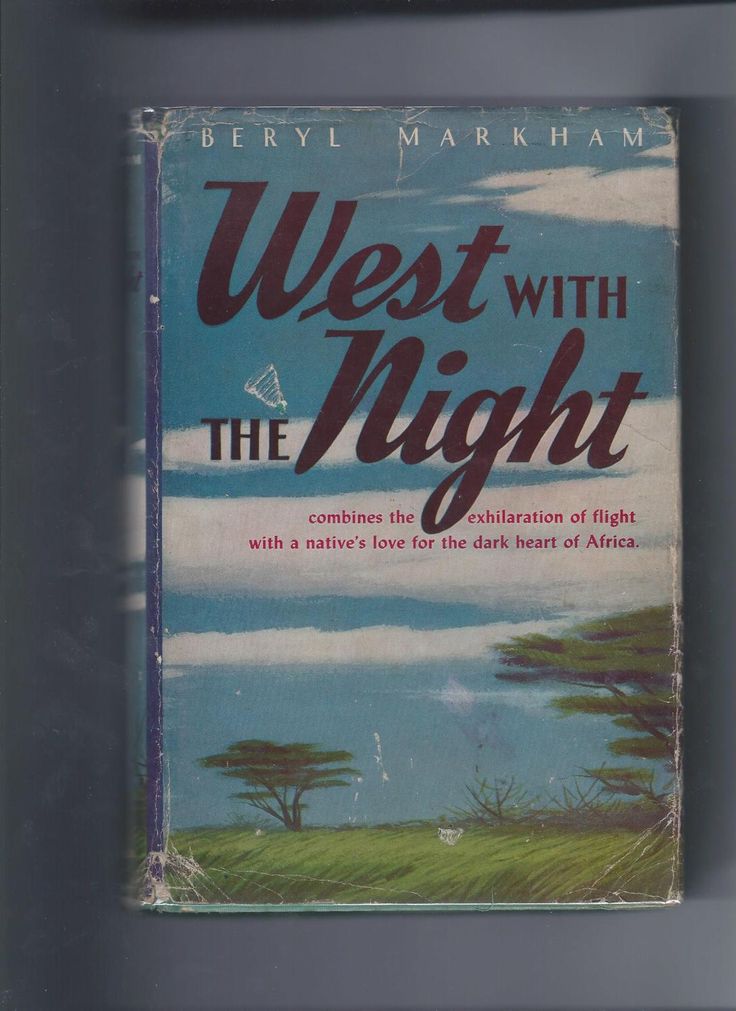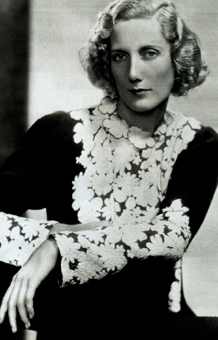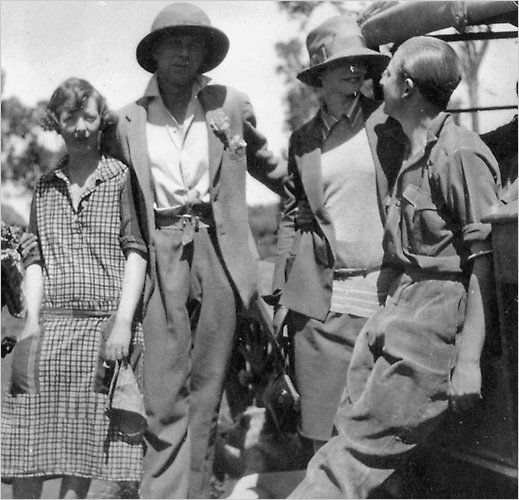Introducing| Beryl Markham | Frontier Adventurer and Socialite
In 1982 a restaurant owner in California named George Gutekunst came across an old book through a circuitous turn of events that was to become his obsession. He was led to his discovery by a note by Ernest Hemingway to his editor, who had become personally acquainted with a young aviator during his sojourn into Africa and heaped sincere praise upon her first and only foray into the literary world: “But [she] can write rings around all of us who consider ourselves as writers … it really is a bloody wonderful book”.

The book in question is “West With The Night” by Beryl Markham, an extraordinary piece of autobiography written by an equally extraordinary woman. By the time of this discovery the memoir had long since fallen into obscurity and its author into poverty, but through Gutekunst’s determination the manuscript was tracked down and republished forty years after it’s original debut, and this time found an appreciative audience with another generation. The elderly Markham was returned once more to fame, this time for her accomplishments as a writer, and was able to live out her remaining days in relative comfort on her farm in Nairobi.
Forty years later, it was once again by chance that I came across the book. I picked up what seemed a dull green paperback on a whim, completely ignorant of its contents. Hemingway’s words printed, rather conspicuously, on the back cover proved intriguing, however. I later found out that the cleverly obfuscating [she] was a diplomatic omission, excising the original text which read “this girl, who is to my knowledge very unpleasant and we might even say a high-grade bitch”. This blunt appraisal of character juxtaposed with genuine recognition of her achievements is an interesting first look at a complex woman who dazzled the public with daring exploits and unconventional charm while simultaneously alienating many who knew her privately.
“West With The Night” was not intended to be an exhaustive retelling of Markham’s life story but is a collection of anecdotes and noteworthy happenings in loose chronological order, handpicked from a life with very little downtime.
The story begins in British East Africa, where her father was an English racehorse trainer who relocated his entire family in the early days of the twentieth century, “because it was new”. Her mother however was decidedly dissatisfied with abandoning all the trappings of civilization and promptly returned to the comforts of the homeland, something the young Beryl would never forgive her for. Consequently Beryl grew up completely free from the restraining cultural baggage of Edwardian womanhood, instilled instead with the curious ideology of the imperial frontier, which valued independence and self-reliance above all else. The many Nandi tribespeople who lived and worked on her father’s farm would also come to play an integral role in her early development. The book starts with an astonishing tale of a young Beryl avoiding her morning lessons by sneaking off to join two young Nandi warriors on a hunting expedition.

The story is told in thick, ornate prose, lingering over lush descriptions of the Kenyan landscape and perceptive comments on the character of her hunting companions. She coolly recounts the terrifying encounter with a wild warthog, who having incapacitated the more experienced hunters with razor sharp tusks, becomes locked in furious combat with her dog. She follows the trail of blood through the dense undergrowth to find both animals seriously wounded, and dispatches the warthog with a thrust of her spear. She spends a long night guarding the wounded dog from the lurking scavengers of the savannah until dawn, when she is found again by her Nandi companions. Her childhood seems to have been comprised of many such exploits, an absolutely unique coming of age at the juncture of different cultures. She grew to adulthood with a variety of impressive scars, and an absolute surety in her own ability to impose her will on the world around her.
This sense of proud autonomy was common to most inhabitants of this wild, formidable country, particularly a native colleague told her that “I have the power to make truths of my beliefs. It is a thing only a Murani can do”. Meanwhile, the European interlopers prized the more liberal social atmosphere that prevailed at the edge of the Commonwealth. Markham became acquainted with many adventurers, eccentrics and entrepreneurs who chose to make their mark on the poorly regulated plains of Kenya. This included the scandalous Happy Valley Set, who were a group of decadent aristocrats set on exploring the heights of hedonism, including rampant drug use, promiscuity, and eventually, suicide and murder.

None of these darker scenes are featured in her autobiography. Chapters are filled with carefully picked accomplishments which portray her in a certain manner. At times her self-reliance appears to verge on self-absorbtion. The rich cast of characters that populate the pages are reduced to orbiting satellites, seemingly reflecting the light of her own vitality back at her. Markham was married three times, and had numerous affairs, none of which is hinted at in the book. The man who would introduce her to the world of aviation and become her long time lover, Denys Finch-Hatton, is depicted as nothing more than a mentor, and his death takes up a single beautifully written but unsentimental paragraph. Markham’s singular spirit gained her the admiration of many more or less equally remarkable men, and yet it is unclear if she ever truly returned those sentiments. In an incredible turn of events Beryl became involved with the young Prince Henry when he travelled to Africa, before the royal family stepped in and precluded the prince from continuing such an apparently unsuitable liaison. All three of her marriages ended due to her infidelity.
Markham’s accomplishments however, absolutely overshadow any other considerations when taking stock of her character. Her life is a list of firsts – first professional female pilot operating in Africa, the first woman to become a licensed racehorse trainer anywhere in the British empire and the first person of any gender to fly non-stop from England to the Americas. However she disparaged those who sought great achievements for the unworthy motives of “admiration and publicity, and worse”. While the stories seem to be chosen for her self-aggrandisement, they are told without any hint of boasting, allowing the facts to speak for themselves.
Her stories of running a freelance aviation business are compelling, a unique line of business that suited her distaste for routine and saw her travelling the country performing a variety of aerial odd jobs from field rescues of injured miners to scouting animal herds for safaris. This lofty viewpoint provides a framework to present a holistic examination of a forgotten time and place, and we are treated to glorious descriptions of the Kenyan landscape , insights into the political and racial tensions of the colonised nations and grand ruminations on giant ruminants (“The essence of elephant-hunting is discomfort in such lavish proportions that only the wealthy can afford it”). Markham’s skills of observation, which were so integral to her success as a pilot, translate naturally to a considerable aptitude for writing. Whether discussing the intricacies of horse breeding or the peculiar qualities of a companion, the book is always engaging, both for its content and the excellence of the prose. Speculation that the book was in fact written by a literary paramour, a rumour discredited by her official biographer Mary Lovell, proved a sign of the times.
Markham wrote like she did everything else in her life, with complete focus and a dissatisfaction with anything less than mastery. She achieved excellence in many fields of human endeavour, explored many exotic parts of the globe and formed close relationships with many kindred, pioneering spirits, but never continued any of these occupations past the excitement of the new. To her novelty was intoxicating, and her whole life structured around escaping banality. In a moment of self-reflection while camped upon the Serengeti she declares that “every tomorrow ought not to resemble every yesterday”, which, in another voice but hers, could be taken as a maudlin quote on a teenager’s Instagram account.
Instead it appears to be a discovery and denomination of her own secret animating principle. In many ways she takes after her father, who left his family behind for the fresh promise of Africa, and later again moved to Peru, leaving Markham to forge her own path at the tender age of seventeen. She pursued freedom from this point on and left many behind in this endless chase. This impetus led to the terrific trajectory of her life and this thoroughly entertaining book but the thought remains that her own life may have been more satisfactory to the onlooker than to herself. She reflects that “you can live a lifetime,and at the end of it, know more about other people than you know about yourself”. The reader takes great pleasure in skimming the surface of Beryl Markham, but in the end this is a book by a woman who’s writing does not reveal her true self.

